Welcome
back to part 2 of our productivity series. It’s all very well establishing why
we need to be productive but the real question is how…
How can
you avoid plummeting productivity levels this summer?
Here are
our top tips for maintaining momentum:
You
might be tempted to think that, while your colleagues are swanning around the
globe, you’re doing a good job just to drag yourself into the office each
day. Simply showing up enough is not enough! In fact, a sparsely
populated workspace can actually increase productivity as there are fewer
distractions. Plan in tasks that require a deeper level of engagement and get
stuck in. For those in a managerial role, lead by example and avoid conveying a
‘business is slow’ undertone – if the team can see your expectations are lower,
they’ll soon fulfil your prophecy.
Set small, achievable goals. When the days are long and the
temperature’s soaring, even the thought of a basic working day can induce
overwhelm. Apps based on the Pomodoro Method help you to maintain focus and
methodically work your way through the to-do list, while structuring your
breaks to maximise their impact. Schedule more taxing or important tasks early
doors, so as energy levels diminish, you’ll have the less challenging things to
deal with.
Mix it up! If the monotony of the summer slog is
getting you down, make some adjustments! You couldtake advantage of the more clement weather by squeezing in a
pre-work jog, or arrange a lunchtime movie for a change of scene. And get
others involved – especially if, while your usual tribe is diminished, you find
yourself working alongside people you’re not used to being around. Activities
that invoke a sense of camaraderie will boost team spirit and lighten the load
when it comes to collaborative tasks.

If you
haven’t already, book a holiday! Even
if it’s just a short break or a staycation, take the lead of those who are away
in order to revitalise and avoid burnout. According to self-professed
‘Productivity Ninja’, Graham Allsop, relaxation is a key component of preparedness,
which is crucial for productivity. To maximise the benefit of your break, be
sure to tie up loose ends before you set off so you can allow yourself to
switch off completely. And to minimise the impact your absence will have,
communicate your plans as soon as possible so the rest of the crew can cover
things as seamlessly as possible.
We all
know someone who just loves to have an excuse to set the air conditioning to a
climate an Arctic fox would thrive in, but getting everyone to compromise on something
more moderate is more likely to raise productivity. While there is no legally enforced maximum temperature for the workplace, general consensus is that people are most
productive when the temperature is set between 22 and 24°C.
Work as flexibly as you can. With the recent recognition
being given to the positive impact of flexible working hours, and ripples
coming from Westminster on the matter, employees are in a good position to state their
case for a more malleable approach to the working day. You could start early to
enable you to incorporate a longer lunch, for example, or work later in the
cool of the evening. If remote working is an option, that could also be a great
way to boost your output, not to mention the time and energy saved from
avoiding the commute. You’re aiming to arrange things in such a
way that allows you spin your plates with as much finesse as possible while
avoiding any breakages.
Drink! As if we needed another reason to guzzle
more H20, a 14% increase in productivity will do nicely, thank you very much.
And of course this should be even more of a priority during the summer. Plant
Nanny is
the Red Mirror hydration reminder app of choice…remembering to drink has never
been so cute.

Of
course, a Red Mirror blog post wouldn’t be a Red Mirror blog post without a nod
to our trusty friend: e-learning. And, once again, it comes up trumps. Even in
the face of adversity that is the British summer, e-learning’s inherent capacity to boost productivity remains.
Let’s
think about how…
The more
traditional sleep-inducing ‘chalk and talk’ approach (albeit cleverly disguised
in swooshy PowerPoint format) is still alarmingly prevalent when it comes to
workplace training. The level of interactivity
and engagement triggered by good e-learning packages, on the other hand, makes
learning a more stimulating, enjoyable and therefore memorable occurrence.
We also
know that prolonged, dry sessions are not conducive to effective learning. Our
ever-shrinking concentration spans cope much better with shorter, bite-sized pieces of content, and e-learning makes
accessing such nuggets a breeze. Furthermore, instead of having to endure hours
of ‘development’ just to be present for the small proportion that is relevant
to them, e-learners can access a bespoke
suite of modules that are tailored
to their individual needs.
While we
certainly wouldn’t condone micromanagement tactics when it comes to overseeing
training, the capacity e-learning has in terms of tracking learner progress could in itself be a prop for
productivity. Proponents of the Hawthorne Effect maintain that efficiency levels
rise when people are aware they’re being observed. And it’s not as Orwellian as
it sounds. When they know they’re being watched, people feel an increased sense
of belonging – their contribution being imperative for organisational success. And
if they can see for themselves how their portfolio of e-learning is building,
they’re likely to take greater ownership
of their development and invest more time and energy in their progression.
Generally
speaking, economists cite poor education and lack of training as a key perpetrator in the
productivity puzzle. Forward-thinking organisations recognise that
well-informed employees make better decisions in less time. With data driving
improvement in all aspects of business, e-learning
analytics allow for a deeper understanding of performance, and for training
to be delivered in a systematic and targeted way.

The
savings e-learning delivers in terms of time
and money would also allow for these precious resources to be used in other
ways to enhance productivity. Financial savings could be invested in more
efficient machinery, for instance.
Time and
again, e-learning has proven itself to be an aide to efficiency (whatever the
weather).
As much
as we could easily continue musing about the virtues of e-learning, we shall,
without further ado (in light of the topic of this post), leave things there.
In the words of Mark Twain, ‘The secret
of getting ahead is getting started.’ But if you do have a moment to spare
before cracking on with all that needs to be done, we’d love to hear from you
in the comments below.
All that
remains for now, dear reader, is for us to send you our best Red Mirror summer
vibes – may your work days be productive and your holidays perfectly
unproductive! And remember: Autumn will be upon us before we know it…

